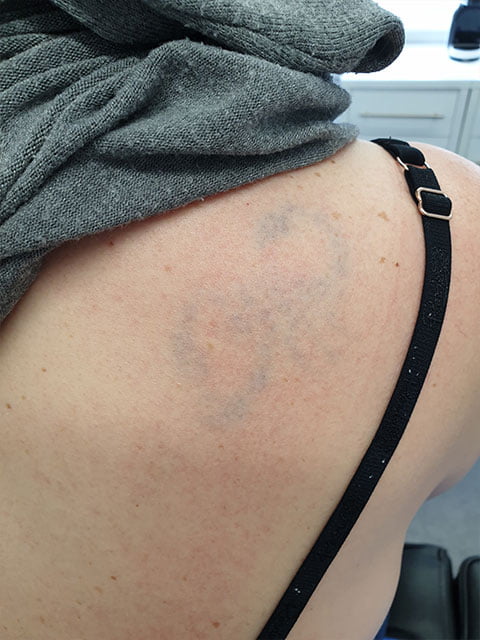Laser Tattoo Removal
Laser tattoo removal is an effective method for removing unwanted tattoos from the skin. It works by using high-energy light to break up the ink particles in the tattoo allowing the body’s immune system to remove them naturally.
The effectiveness of laser tattoo removal depends on a variety of factors including the size and colour of the tattoo, the age of the tattoo, the location of the tattoo on the body, the type of laser used and the skill of the laser technician performing the procedure.

Size and Colour of the Tattoo
The size and colour of the tattoo are important factors in determining the effectiveness of laser tattoo removal. Larger tattoos may require more sessions to remove as the laser must be applied to each part of the tattoo individually. In addition, darker colours such as black are easier to remove than lighter colours such as yellow or green because they absorb more light energy from the laser.
Age of the Tattoo
The age of the tattoo is another important factor in determining the effectiveness of laser tattoo removal. Older tattoos are generally easier to remove because the ink has had time to break down and fade naturally. In addition, tattoos that have been exposed to sunlight for long periods of time may also be easier to remove as the UV radiation from the sun can break down the ink particles in the tattoo.
Location of the Tattoo
The location of the tattoo on the body is also important in determining the effectiveness of laser tattoo removal. Tattoos on areas with good blood flow such as the arms may be easier to remove because the immune system can more easily remove the broken down ink particles. Tattoos on areas with poor blood flow such as the feet or hands may be more difficult to remove because the immune system has a harder time removing the ink particles.
Type of Laser used
The type of laser used for tattoo removal is also important in determining the effectiveness of the procedure. There are several types of lasers that can be used for tattoo removal including Q-switched lasers, picosecond lasers and fractional lasers. Q-switched lasers are the most commonly used type of laser for tattoo removal because they are effective at removing a wide range of colours. Picosecond and fractional lasers are newer technologies that are also effective at removing tattoos but they may not be suitable for all skin types.
Skill of the Laser Technician
Finally, the skill of the laser technician performing the procedure is also important in determining the effectiveness of laser tattoo removal. A skilled technician will be able to adjust the laser settings to the specific needs of the individual patient ensuring that the laser is effective at breaking down the ink particles without causing damage to the surrounding skin. In addition, a skilled technician will be able to advise the patient on the best aftercare practices to ensure that the skin heals properly and the tattoo is removed as effectively as possible.
Overall, laser tattoo removal is an effective method for removing unwanted tattoos from the skin. However, the effectiveness of the procedure depends on a variety of factors including the size and colour of the tattoo, the age of the tattoo, the location of the tattoo on the body, the type of laser used and the skill of the laser technician performing the procedure. Patients considering laser tattoo removal should consult with a qualified professional to determine the best course of action for their specific needs
Check out our gallery to see for yourself how effective our treatments have been.
You can check out our Price list or if you would prefer a more accurate quote why not use our Personalised quick quote form below. Alternatively book a Free Consultation for more information.














